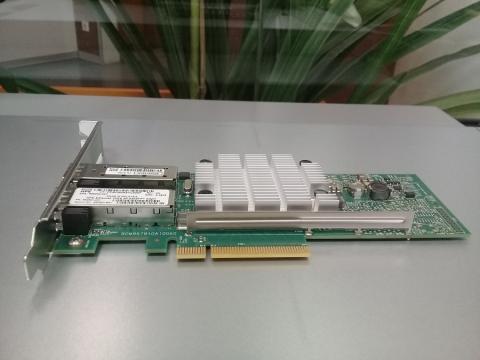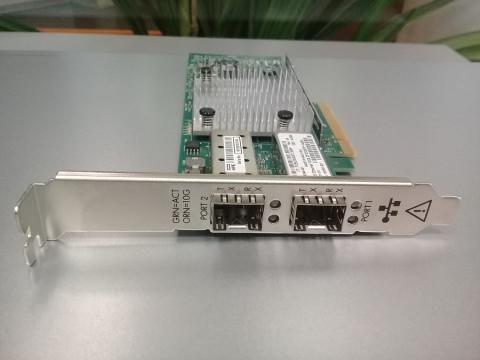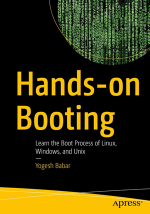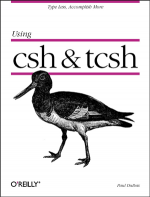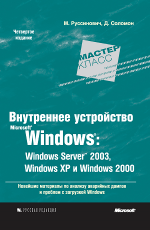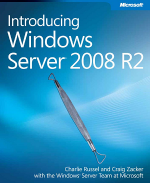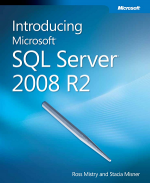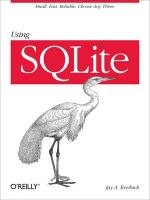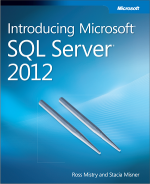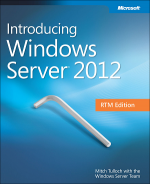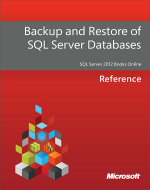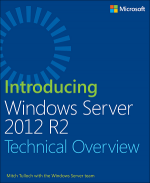
10 Гб PCIe сетевой адаптер с двумя SFP+ портами для серверов HPE ProLiant.
Ссылки
Краткая спецификация: c04111517.pdf
Обзор: https://support.hpe.com/hpsc/doc/public/display?docLocale=en_US&docId=emr_na-c03354448
Технические характеристики
- Part Number: 652503-B21
- Чипсет: QLogic 57810S chipset
- Количество портов: 2
- Скорость, Два порта, каждый 20 Гб/сек двунаправленный. Суммарно 40 Гб/сек.
- Слот: PCI Express 2.0 (Gen 2) x8
- Форм-фактор: стандартный PCIe (HHHL)
- Низкий профиль: да
- Мощность: 9 Вт
- Рабочая температура: от 0° до 55° C
- Рабочая влажность: от 5% до 95% без конденсата
- Для серверов:
- ProLiant DL (rack-optimized):
- HP ProLiant DL60 Gen9
- HP ProLiant DL80 Gen9
- HP ProLiant DL120 Gen9
- HP ProLiant Dl160 Gen9
- HP ProLiant DL180 Gen9
- HP ProLiant DL360 Gen9
- HP ProLiant DL380 Gen9
- HP ProLiant DL160 Gen8
- HP ProLiant DL360e Gen8
- HP ProLiant DL360p Gen8
- HP ProLiant DL380e Gen8
- HP ProLiant DL380p Gen8
- HP ProLiant DL385p Gen8
- HP ProLiant DL560 Gen8
- HP ProLiant DL580 Gen8
- HP ProLiant DL580 G7
- HP ProLiant DL585 G7
- HP ProLiant DL980 G7
- ProLiant ML (expansion-optimized):
- HP ProLiant ML350 Gen9
- HP ProLiant ML350e Gen8
- HP ProLiant ML350p Gen8
- HP ProLiant ML350e Gen8 v2
- ProLiant SL (scalable line):
- HP SL2500 Scalable System
- HP ProLiant SL210t Gen8
- HP ProLiant SL230s Gen8
- HP ProLiant SL250s Gen8
- HP ProLiant SL270s Gen8
- HP ProLiant SL4540 Gen8
- HP ProLiant SL4545 G7
- ProLiant DL (rack-optimized):
Спецификация
- Key features
- Industry-Leading throughput and latency performance.
- Up to 40 Gb/s Bi-Directional near line rate throughput.
- Hardware acceleration TCP/IP/UDP stateless offloads, as well as for TCP Offload Engine (TOE).
- Improved small packet performance: Supports UEFI and legacy boot options and Tunnel offload support (NVGRE, VXLAN).
- Low profile design shipping with standard height and low-profile brackets.
- Optimized for virtual server environments with support for Network Partitioning (NPAR) and Single-Root I/O Virtualization (SR-IOV) Active health systems support via FW (OCBB), I2C capable.
- PXE, jumbo frames, checksum and segmentation offload, IPv6 and RSS.
- On chip temperature monitor (OCSD).
- Standard server operating system support.
- Field replaceable and upgradeable.
- Support for Preboot eXecution Environment (PXE).
- Integrated PHY and MAC.
- IEEE 1588 (Time synchronization).
- CNU Support.
- Throughput - Theoretical bandwidth
- This adapter delivers 20 Gb/s Bi-Directional Ethernet transfer rate per port (40 Gb/s per adapter), providing the network performance needed to improve response times and alleviate bottlenecks
- 802.1Q VLANs
- IEEE 802.1Q Virtual Local Area Network (VLAN) protocol allows each physical port of this adapter to be separated into multiple virtual NICs for added network segmentation and enhanced security and performance
- VLANs increase security by isolating traffic between users. Limiting the broadcast traffic to within the same VLAN domain also improves performance
- Checksum and segmentation offload
- Normally the TCP Checksum is computed by the protocol stack. Segmentation offload is technique for increasing outbound throughput of high-bandwidth network connections by reducing CPU overhead.
- The technique is also called TCP Segmentation Offload (TSO) when applied to TCP, or Generic Segmentation Offload (GSO).
- Configuration utilities
- This adapter ships with a suite of Operating System (OS)-tailored configuration utilities that allow the user to enable initial diagnostics and configure adapter teaming.
- This includes a patented teaming GUI for Microsoft Windows OS.
- Additionally, support for scripted installations of teams in a Microsoft Windows environment allow for unattended OS installations
- Converged Network Utility (CNU)
- This adapter supports CNU a manageability application to configure Converged Network Adapters (CNAs) and Ethernet adapters on HPE Servers.
- This host based utility supports for both GUI and command line interface (Scriptable), and can be used to configure Ethernet, FCoE, iSCSI and NPAR related features/functionality on multiple OS platforms including Windows and Linux.
- CNU is able to configure multiple HPE Adapters from various network controllers at the same time. Users can benefit easier setup steps, shorter re-boot time, and one-stop solution for multiple adapters via CNU.
- DPDK
- This adapter supports DPDK with benefit for packet processing acceleration and use in NFV Deployments.
- HPE Sea Of Sensors 3D
- Support for the HPE Sea of Sensors which is a collection of 32 sensors that automatically track thermal activity - heat - across the server.
- When temperatures get too high, sensors can initiate fans and make other adjustments to reduce energy usage. A significant improvement lies in the ability to apply fan speed increases only to the portion of the system that is rising in temperature, rather than all six fans in unison, which reduces the amount of energy used for cooling.
- IPv6
- IPv6 uses 128-bit addressing allowing for more devices and users on the internet. IPv4 supported 32-bit addressing.
- Jumbo frames
- This adapter supports jumbo frames (Also known as extended frames), permitting up to a 9,000 byte (KB) transmission unit (MTU) when running Ethernet I/O traffic.
- This is over five times the size of a standard 1500- byte Ethernet frame. With jumbo frames, networks can achieve higher throughput performance and greater CPU utilization.
- These attributes are particularly useful for database transfer and tape backup operations.
- Message Signaled Interrupt (Extended) (MSI-X)
- Message Signaled Interrupt (Extended) provides performance benefits for multi-core servers by load balancing interrupts between CPUs/cores.
- Network adapter teaming
- This adapter support for NIC teaming helps IT administrators increase network fault tolerance and increased network bandwidth, the team of adapters can work together as a single virtual adapter, providing support for several different types of teaming enabling IT administrators to optimize availability, improve performance and help reduce costs.
- Network Partitioning (NPAR)
- This adapter supports NPAR allowing administrators to configure a 10Gb port as four separate partitions or physical functions. Each PCI function is associated with a different virtual NIC.
- To the OS and the network, each physical function appears as a separate NIC Port.
- Optimized for virtualization
- I/O Virtualization support for VMware NetQueue and Microsoft VMQ helps meet the performance demands of consolidated virtual workloads.
- Preboot eXecution Environment (PXE)
- Support for PXE enables automatic deployment of computing resources remotely from anywhere. It allows a new or existing server to boot over the network and download software, including the OS, from a management/ deployment server at another location on the network.
- Additionally, PXE enables decentralized software distribution and remote troubleshooting and repairs.
- Receive Side Scaling (RSS)
- RSS resolves the Single-Processor bottleneck by allowing the receive side network load from a network adapter to be shared across multiple processors.
- RSS enables packet Receive-Processing to scale with the number of available processors.
- Server integration
- This adapter is a validated, tested, and qualified solution that is optimized for HPE ProLiant servers. Hewlett Packard Enterprise validates a wide variety of major operating systems drivers with the full suite of web-based enterprise management utilities including HPE Intelligent Provisioning and HPE Systems Insight Manager (SIM) that simplify network management.
- This approach provides a more robust and reliable networking solution than offerings from other vendors and provides users with a single point of contact for both their servers and their network adapters.
- SR-IOV
- SR-IOV provides a mechanism to bypass the host system hypervisor in virtual environments providing near metal performance and server efficiency.
- SR-IOV provides mechanism to create multiple Virtual Functions (VFs) to share single PCIe resources.
- The device is capable of SR-IOV, and requires Server BIOS support, controller firmware, and OS support.
- TCP/UDP/IP
- For overall improved system response, this adapter supports standard TCP/IP offloading techniques including: TCP/IP, UDP checksum offload (TCO) moves the TCP and IP checksum offloading from the CPU to the network adapter.
- Large Send Offload (LSO) or TCP segmentation offload (TSO) allows the TCP segmentation to be handled by the adapter rather than the CPU.
- Precision Time Protocol (IEEE 1588 PTP)
- Synchronization of system clocks throughout a network, achieving clock accuracy in the sub-microsecond range, making it suitable for measurement and control systems.
- TCP/IP Offload Engine (TOE)
- TOE Shifts the processing of data in the TCP Protocol stack from the server CPU to the adapter's processor, freeing server CPU cycles for other operations.
- Tunnel offload
- Minimize the impact of overlay networking on host performance with tunnel offload support for VXLAN and NVGRE. By offloading packet processing to adapters, users can use overlay networking to increase VM migration flexibility and virtualized overlay networks with minimal impact to performance.
- HPE Tunnel offloading increases I/O throughput, reduces CPU utilization, and lowers power consumption.
- Tunnel offload supports VMware's VXLAN and Microsoft's NVGRE solutions.
- LED Indicators
- LED Indicators show link integrity and network activity for easy troubleshooting.
- Management support
- This adapter ships with agents that can be managed from HPE SIM or other management application that support SNMP.

